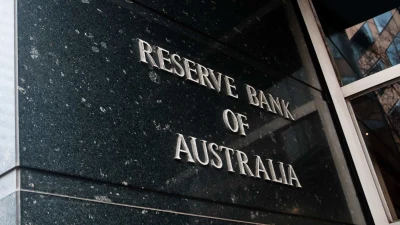Managing the shifting tax burden
Arguably one of the most significant superannuation changes since July 2007 was the removal of the Reasonable Benefit Limits (RBL) and the implementation of contribution caps. Both resulted in the control of the tax environment and imposition of penalties moving from the back to the front of the superannuation system.
Strategies moved from last minute wealth accumulation and RBL management to ongoing cash flow management and medium to long-term time investment horizons.
Now we need to keep track of everything that goes into a client’s superannuation accounts every financial year and the more superannuation accounts held, the more difficult the task.
It is important to be aware that the contribution caps are not the same as the fund acceptance restrictions, although the caps can determine how much a fund can accept in terms of non-concessional contributions.
There are three restrictions placed on a superannuation fund for accepting contributions:
- age-based restrictions;
- amount-based restrictions for non-concessional contributions and contributions made other than by an employer; and
- tax file number quotation for non-concessional contributions.
Importantly, the amount-based restriction applies on a per fund basis — that is, each fund does not need to consider what contributions were made to another fund.
A misunderstanding surrounding the difference between superannuation and taxation legislation can result in significant adverse taxation consequences for superannuation clients.
The fund acceptance restrictions are simply a limitation of how much a fund can contribute. They do not determine the tax penalties that may apply where contribution limits are breached.
From a taxation position, the contribution caps do not limit the amount of contributions a person can make, or receive on their behalf to their superannuation fund(s).
What the caps do limit is the amount of concessional contributions that will be taxed at a concessional rate or the amount of non-concessional contributions made that will not be taxed at all.
The implication is that, unlike the rules prior to July 1, 2007, the penalty for exceeding certain taxable contribution levels is moved from the employer to the employee.
Previously, exceeding the ‘age-based limits’ prohibited employers from claiming the excess contribution as a deduction.
Now, the employer can claim a full tax deduction for employee contributions, but the employee will suffer an additional 31.5 per cent tax penalty on the excess above the concessional limits.
In fact, excess concessional contributions could also be taxed at up to 93 per cent if the person also breaches their non-concessional contribution limits.
At the end of each financial year, (post section 290-170 activity), the trustee sends a member contributions summary to the Australian Taxation Office (ATO).
The ATO determines whether excessive contributions are present by consolidating all of a client’s superannuation reports.
This means the financial adviser needs to be aware of their client’s circumstances to ensure there are no inadvertent breaches of contribution limits.
What happens when excessive contributions occur?
Excessive concessional contributions also count towards the non-concessional contributions cap, which could result in further tax if the non-concessional cap is exceeded. This could potentially add up to 93 per cent tax levied on the excessive concessional contributions (see Table 1).
The ATO will issue a notice or authority to your client depending on the type of contribution that may be causing the problem (see Table 2).
Concessional contributions
A member can elect to pay the tax themselves and leave the fund intact or get the fund to pay it direct to the ATO or a combination of both.
Regardless, the client will receive the Voluntary Release Authority, which must be sent to the trustee within 90 days. The client can instruct the trustee to pay them or the ATO the amount they nominate or the amount of the total excess contributions tax.
On receipt of the authority the fund must release the amount within 30 days.
Non-concessional contributions
A member can elect to pay the tax themselves, instruct the trustee to pay the tax or a combination of both. Regardless, the member must use the Compulsory Release Authority to withdraw the amount of excessive tax from the fund.
If instructed to release an amount less than the tax due, the ATO will instruct the trustee to pay the balance to the ATO even if the client has already paid the full amount directly to them.
If the Compulsory Release Authority is not received, the trustee will get an ATO ‘Authority to Release Excess Contributions Tax’ regardless of whether or not the client has paid the tax directly.
The trustee must also pay the full tax to the ATO and the client could be penalised up to an additional $2,200 for failing to action the Compulsory Release Authority.
Tips for advisers
- Ensure a client’s salary sacrifice arrangement will not result in total employer contributions exceeding the concessional contribution cap that applies for that financial year.
- Ensure you are aware of any bonus payments, particularly if the client receives an option to pay this bonus to superannuation.
- Tax-deductible contributions are concessional contributions where a tax deduction is claimed and therefore, if a person also received employer contributions, they must be viewed in total in terms of the concessional cap levels.
- Caution must be exercised for highly paid executives who will receive employer termination payments above $1 million and where they have the option to contribute these amounts to superannuation as a directed termination payment.
- Contributions split to a spouse continues to be counted towards the original member’s contribution limits, not against the receiving spouse’s contribution cap.
- Exemptions are available for certain contributions from the contribution caps such as directed termination payments, small business asset disposals where proceeds are contributed to superannuation, and the non-taxable component of an overseas transfer to an Australian superannuation fund, though these exemptions may have thresholds applied.
- Clients aged 64 during the financial year may be able to take advantage of the three-year non-concessional contribution limit even if they have already reached age 65.
- Ensure tax deduction requests for personal contributions are made to a superannuation fund before commencing any pension or commutation to another fund.
- If your client is completing an Income Tax assessment Act 1997 Section 290-170 Tax Deduction Notice, the superannuation trustee is acting in good faith and does not test the client to see if they are eligible to claim a deduction. A completed and returned Section 290-170 notice tells the trustee to treat the contributions as concessional contributions, but a person who has served a Section 290-170 notice on a superannuation fund cannot reverse their request. The notice may be amended down and is only available until the end of the next financial year so it may be prudent to overestimate rather than underestimate the deduction.
Martin Breckon is a technical marketing manager at Aviva.
Recommended for you
The Reserve Bank of Australia (RBA) has lowered rates to a level not seen since mid-2023.
Financial Services Minister Stephen Jones has shared further details on the second tranche of the Delivering Better Financial Outcomes reforms including modernising best interests duty and reforming Statements of Advice.
The Federal Court has found a company director guilty of operating unregistered managed investment schemes and carrying on a financial services business without holding an AFSL.
The Governance Institute has said ASIC’s governance arrangements are no longer “fit for purpose” in a time when financial markets are quickly innovating and cyber crime becomes a threat.











